KPI Management And Best Practices: How To Find The Perfect KPI Solutions?
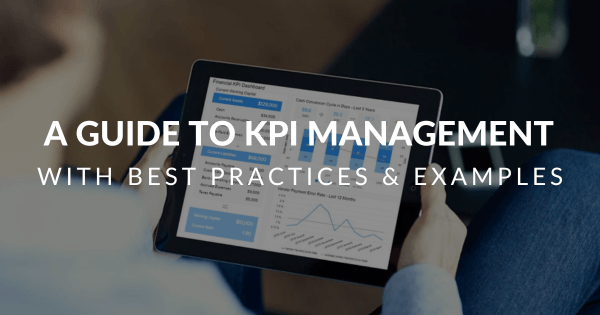
Fact: 100% of statistics strategically placed at the top of blog posts are a direct result of people studying the dynamics of Key Performance Indicators, or KPIs.
An even more interesting fact: The blogs we read regularly are not only influenced by KPI management but also concerning content, style, and flow; they’re often molded by the suggestions of these goal-driven metrics.
Catchy headlines, backlinks to relevant influencer content, the seamless placement of a numbered or bulleted and visuals are some of the key drivers of successful digital content. But these tactics and elements are not crafted out of thin air, nor are they sung by the high council of Silicon Valley; they are created by us, the readers. It’s our consumer demands that are communicated to businesses via KPI examples, dictating how the brands or businesses craft and develop the content they publish.
We will explain the basics of KPI management and discuss best practices. Then, we’ll share specific KPIs by industry and show how they're used in real-life business contexts. But first, let's start with a simple definition.
What Is KPI Management?
KPI management is the process of selecting, monitoring, and analyzing specific industry key performance indicators (or KPIs). The process helps businesses and decision-makers measure the success of their strategies toward achieving company goals.
The fundamentals of measuring performance indicators are not all that different from well-established scientific evaluation methods: ask a question, set a goal, find a quantifiable means of achieving that goal, test these means, and then retest for consistency.
Now, apply this methodology to how businesses engage with their clients, and this is what is KPI management all about.
Company A asks itself what its best resources are for attracting customers. Company A then creates ads, launches a blog, boosts its social media presence, and optimizes its website for enhanced search engine rankings. The effort is a success, and more customers start pouring in.
What happens next? How does Company A measure the success of each individual effort so that it can isolate strengths and weaknesses?
The answer is through a KPI management system based on professional KPI software. Without performance indicators, most B2B blogs could still largely be based on classic storytelling to rope in more readers, all while falling behind their direct competitors.
So, why is something that seems rather entry-level often so difficult for some executive boardrooms to grasp? Because, in practice, getting a handle on performance indicators is far more complicated and costly than an innocuous experiment alone. All businesses have a limit on expenditure; as essential as the management of KPIs is to growth, an improper pursuit or inaccurate action can result in a heavy, flowing drain on revenue.
Here, we will discuss KPI best practices and how to find and leverage the most effective KPIs for your business.
But first, we will address a very important KPI-related question based on the studies of a certain Mr. Bernard Marr.
Why Do KPIs Matter?
To answer this most critical of questions, here’s a little help from a renowned author and industry expert:
Bernard Marr is the author of several books, including Key Performance Indicators for Dummies and Key Performance Indicators: The 75+ Measures Every Manager Needs to Know. Marr asserts effective management of KPIs as the answer to this necessity:
“It is more important than ever that business leaders and senior executives are able to make better-informed decisions, improve performance, and seek out new and novel ways to gain the edge over their competition,” Marr explains.
At this point, it’s worth noting that there are countless businesses that have found success without ever even considering performance indicators in practice. Not every venture includes plans for expansion – and that’s okay. But for those who want to grow their businesses and track their progress effectively, KPIs are the choice unit of measurement.
Key performance indicators enable businesses to measure their own ability to set and achieve goals. They are often used to measure customer satisfaction, employee performance, and engagement with the company’s target audience, and they are usually handled through a KPI management tool.
KPIs, in their essence, transform numbers into behavioral responses by isolating indicating actions with sophistication. For example, customer satisfaction metrics are used to drive a better customer experience. These indicators provide the most precious intel a company can buy, fostering a window of insight into targeted efforts that can consistently produce results.
However, the effort to gain this intel can be damaging if handled improperly. Ineffective management of KPIs means little actionable data and a terrible return on investment. This, in turn, will cause problems like wasted focus, wayward strategies, and loss of revenue. It is important to think deeply and collectively about best practices to manage KPIs. Fortunately, there are universal guidelines that can help steer businesses in the right direction.
Explore our 14-days free trial & benefit from great KPI analysis today!
What Are KPI Best Practices?
We’ve established why performance indicators are so important. Now it’s time to look at KPI best practices and tips for finding the perfect indicators for your organization so you can put this concept into practice.
While it’s true that you can’t manage what you can’t measure, it’s also true that you can’t measure what you don’t track consistently. With this in mind, let’s review five best practices for choosing and using KPIs in your business.
1. Think of your business goals
Many industries use KPI management solutions to isolate their strongest indicators, such as in the field of retail analytics. That’s not to say these indicators are the only choices for retail businesses, but they do make a solid starting point. “The right KPIs or solution for you might not be right for another organization. KPIs should match your specific strategy and goals, not just your industry,” says Ted Jackson of ClearPoint Strategy.
When selecting KPIs to measure success, align them closely with your overarching business objectives. Consider what specific outcomes contribute to achieving these goals. Anything else is just background noise and can distract you from what’s truly important in your business.
For instance, if your organization aims to increase customer satisfaction, relevant KPIs may include Net Promoter Score (NPS) or customer retention rates. There are plenty of KPIs you could measure, but not all of them will contribute to a meaningful narrative. It’s best to focus your efforts on the essential metrics that can drive results. If you require more context about those KPIs, you can start to expand into other areas.
2. Avoid data overload
Focusing on your goals is an excellent tie-in to this next point, which is to keep your data as simple as possible without losing its significance. While it's tempting to gather an abundance of data, it's crucial to select a few meaningful KPIs rather than drowning in information. Overloading with metrics can lead to confusion and dilute the significance of key indicators.
This is a classic case of quality over quantity. While there are plenty of KPIs that might be nice to know, you’ll have an easier time tying data to actions if you focus your efforts. A streamlined approach not only enhances decision-making but also ensures you can make the most efficient use of your resources.
3. Define achievable targets
Tracking KPIs is meant to keep you on track toward your goals. You’ll have a data-driven view of how your efforts impact specific company areas so you can fine-tune your approach. But remember that results don’t happen overnight, and goals aren’t achieved in a blink of an eye. Even with your finger constantly on the pulse of your business, you’ll need to set realistic targets.
Unrealistic goals can lead to demotivation and misalignment with actual business capabilities. Set benchmarks based on historical data, industry standards, and a comprehensive understanding of your business's potential. Striking a balance between ambition and achievability allows KPIs to work as motivational tools rather than becoming sources of frustration.
4. Differentiate KPIs from metrics
Your KPIs are not the same thing as metrics. While both can help to tell a story about your business’s performance, the two are not interchangeable. KPIs are strategic indicators directly linked to business objectives. You can use KPIs to gain actionable insights into your business’s performance. On the other hand, metrics are raw data points that might or might not align with key goals.
Make sure your selected indicators are truly pivotal to your business’s success. Knowing this difference will also help you avoid including metrics that lack strategic relevance.
5. Define a monitoring schedule
Rounding out our list of KPI best practices, remember that KPIs that aren’t routinely monitored can’t influence your strategy. This isn’t a box to check on a to-do list but rather a valuable opportunity to improve your outcomes. It’s best to establish a clear and structured monitoring schedule to allow for timely adjustments and informed decision-making.
How often you monitor may vary depending on the nature of the KPIs and the business context. Regardless, a predefined schedule enhances accountability and ensures that any missed targets can be addressed quickly. Regular reviews also encourage your team to proactively optimize your business’s performance.
How to Select Your KPIs
Choosing between following industry standards or embracing unique indicators is an ultimatum every manager must face in the KPI management process. For those who want to experiment with less-explored, off-the-beaten-track KPIs, there are two standard practices for evaluation that can help businesses determine whether those particular performance indicators will be effective: the “SMARTER” criteria and the “Six A’s.”
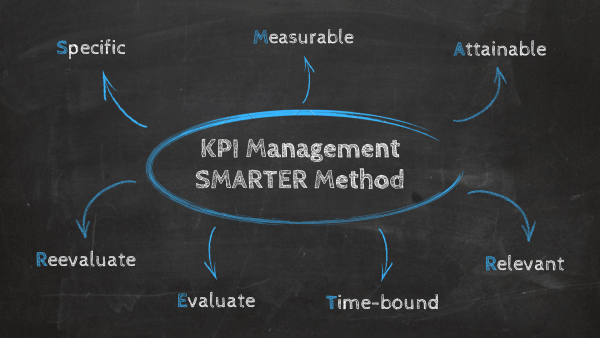
Choosing Effective KPIs: SMARTER Method
- Specific: Start with a specific objective that can be isolated. Pick it apart – remember that customer satisfaction, sales, retention, etc. can all be measured with different KPIs.
- Measurable: Find a definitive way to measure the data that needs recording. Once again, simplification is key here. There should only be one effective method of measurement – an essential aspect of KPI management.
- Attainable: Make sure the objective is something that can be readily attained. One way of testing this is by making sure the organization has completed this objective before.
- Relevant: Ask if these goals are relevant to the target groups. Would achieving this objective impact the groups you are trying to engage, and in what manner?
- Time-bound: Create timeframes and deadlines to measure the KPI accurately. If primary trials produce the desired results, revise the timeframe for the next round to be more challenging.
- Evaluate: See if the KPIs provide the actionable data needed to achieve set goals. Brainstorm with the team to see if any other angles should be examined.
- Reevaluate: Test and retest for consistency before regular implementation. Effective business strategies are built around KPIs, so ensure the data is providing exact and specific answers.
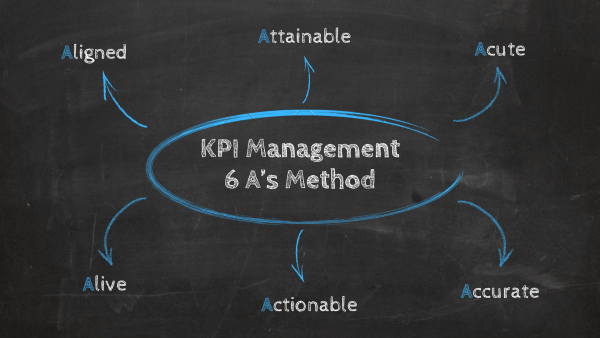
Choosing the Right KPIs: The Six A's Method
- Aligned: The KPIs align with the activities of its specific targets. As long as the company continues as normal, data collection should be effortless with modern KPI measurement tools.
- Attainable: The indicator is easily attainable so that it can be measured. If data doesn’t start regularly flowing once the trial has begun, there may be something amiss.
- Acute: The KPI makes others well-informed, or acute, of the goal and its measurement. If the purpose is at all unclear, it may be a sign to try a different indicator.
- Accurate: The data pulled from a KPI will be used to accomplish future objectives; it must be reliable and accurate to avoid leading to any misinterpretation.
- Actionable: KPI results produce data that influences a plan of action. KPIs should fuel new processes – if there is no follow-up, then the metric loses its value.
- Alive: The data can be leveraged throughout the company’s lifespan. It should become a constant resource throughout an ever-evolving business.
“As business leaders, we must understand that lack of data is not the issue. Most businesses have more than enough data to use constructively; we just don't know how to use it. The reality is that most businesses are already data rich, but insight poor.” – Bernard Marr
Avoid These KPI Mistakes
Mistakes, particularly when you’re dealing with managing KPIs, are not only costly; they could prove devastating to your revenue and resources. To help you avoid such mistakes, here are key considerations for your reference.
As mentioned, selecting your KPIs can turn into an expensive witch hunt, sending marketing departments spiraling into an abyss of pointless data. Ironically, many cost-minded professionals prefer KPIs that seem more direct, such as financial goals. However, focusing all your efforts on instant gratification could be a huge mistake.
In one study, Levi Newman of BSC Designer explains:
“Many managers set goals that are based on the wrong performance measures, meaning they’re not accurately describing the main objective. It’s like saying your target is a dartboard instead of the bulls-eye.”
When learning how to manage KPIs, do your best to focus on future standards and not past performance. However, keep in mind that these future standards you want to achieve must be realistic; otherwise, your efforts will only lead to a performance assessed as ‘poor,’ with frustrated managers and disgruntled employees who will feel less engaged and, as a result, less motivated.
Finally, once you know what to measure and how to measure it, you should agree on an action plan with other key stakeholders across the organization. Define who does what and set milestones along the way, all while keeping communication transparent and open. All too often, no clear action plan is defined after setting up a KPI-driven strategy, which leads to misunderstandings and mixed priorities that impact the teamwork, the atmosphere, and ultimately – the growth of the business.
How To Choose The Right KPI Management Solution
The right KPI management software solution will have these key features and benefits:
- Easy to use and accessible to everyone within the organization.
- Offer online data visualization tools that are clear, concise, and tell a story.
- Provide access to all the data and insights you need for success in one central space - no need for spreadsheets and complex files.
- Empower you to work with and customize the KPIs that will benefit your orgaization the most by organizing your data in a neat and clear way.
- Give you the option of managing KPIs effectively online and on mobile devices.
- Come with an exemplary level of user support.
- Help you reach and exceed your organizational goals sustainably.
- Provide a methodical approach to KPI dashboards and reports.
- Reduce the time needed to collect and analyze KPI data by automating processes.
- Enable you to integrate custom data connectors to have all your information in one central place.
To squeeze the maximum value from your KPI data management activities, it's essential to work with the right online data analysis tools for the job.
To track, monitor, and gain valuable insights from your performance indicators, selecting the right KPI management software will help you steer your success and gain an all-important edge over the competition.
When it comes to managing KPIs, the tools you work with should offer all of these mentioned key attributes. Using effective KPI data management software; you can benchmark, measure, and track your performance with ease, visualizing insights in a way that will allow you to make swift, accurate, and informed decisions that drive the company forward.
With a robust mix of customizable KPIs to choose from, there is a performance indicator that covers every critical aspect of managing and developing a business, regardless of industry or sector. When it comes to effective KPI data management, our software and solutions are purpose-built to satisfy this need. Moreover, as you build your own KPI reports based on your specific goals, you can shape your success and improve your performance in a sustainable way, allowing you to thrive even in the most challenging of circumstances.
Explore our 14-days free trial & benefit from great KPI analysis today!
Discover KPI Management Solutions In Practice
When selecting KPIs for your organization, a solid starting point is to look at the common KPIs used within your industry. Next up, we’ll share specific KPIs for each industry that can be used as templates. Let’s kick off our KPI management examples in the retail industry.
1. Retail: When will my customers spend more money?
In these businesses, certain standard retail KPIs include the Average Transaction Size, Total Volume of Sales, Back Order Rate, Customer Retention, Total Sales By Region Order Status, Perfect Order Rate, and Return Reason, among others. Each of these metrics integrates cohesively with a retail operation.
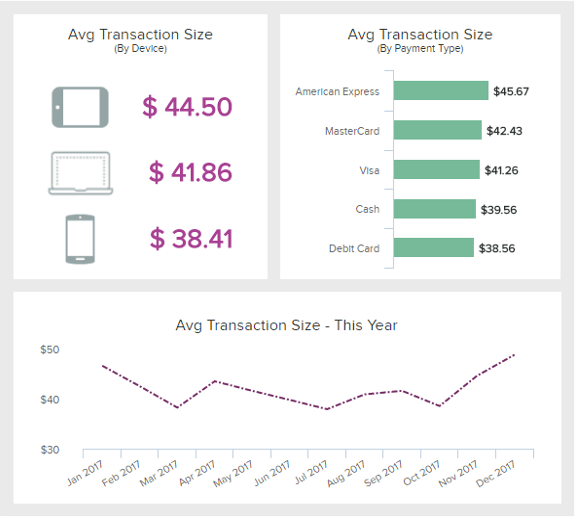
To have an effective strategy built around KPIs, you must clearly define your goals. Do you want to create a conversation or engage individuals? Do you want to sell them a single-use product or an idea that would influence them to return? Are you measuring the output of your employees by their sales numbers or by something a little more abstract?
These are all questions worth asking, and for every one of them, there is a matching KPI. In the example above, we have depicted the Average Transaction Size, a significant KPI for the retail industry since it can evaluate when your customers are more likely to spend money. The goal is to increase it over time, but it would make sense to combine this metric with others mentioned to make your insights more clear. And if you want to additionally polish your reporting techniques, you can have a look at some of our best practices for different functions in the company – management reports, sales reports, or marketing reports – the choice is yours.
2. Sales: Where do we stand regarding our targets?
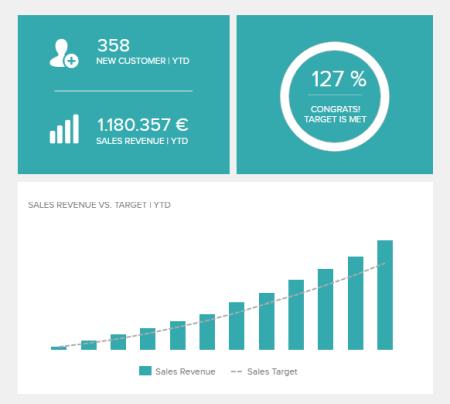
Another example we can illustrate comes from managing your business's revenue, which is one of the most important sales KPIs for any business. You need to check where you stand after planning and forecasting your sales targets. The goal is to outperform, but certainly, it is wise to evaluate your strategy if performance issues arise.
3. Finance: How do we handle the company's assets?
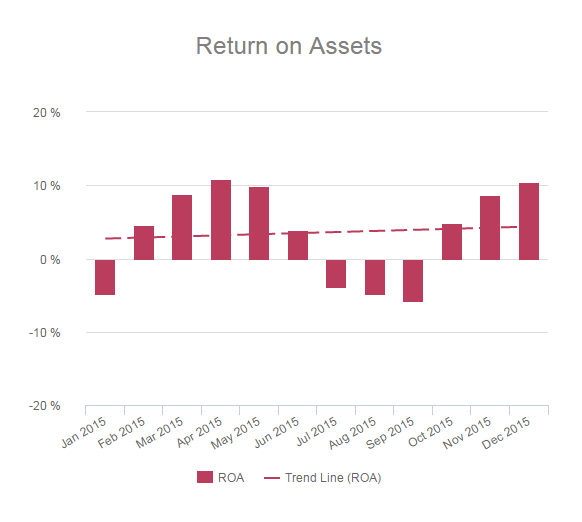
This example comes from the financial industry. Financial analytics are the core of every finance department, business, and employee. To generate proper value and increase performance, there are various financial KPIs that can advance the collection, monitoring, and analysis of the vast amount of data. Our example depicts Return on Assets, which should be as high as possible to show how well a company's assets are being managed.
4. Marketing: How well are we hitting our business objectives?
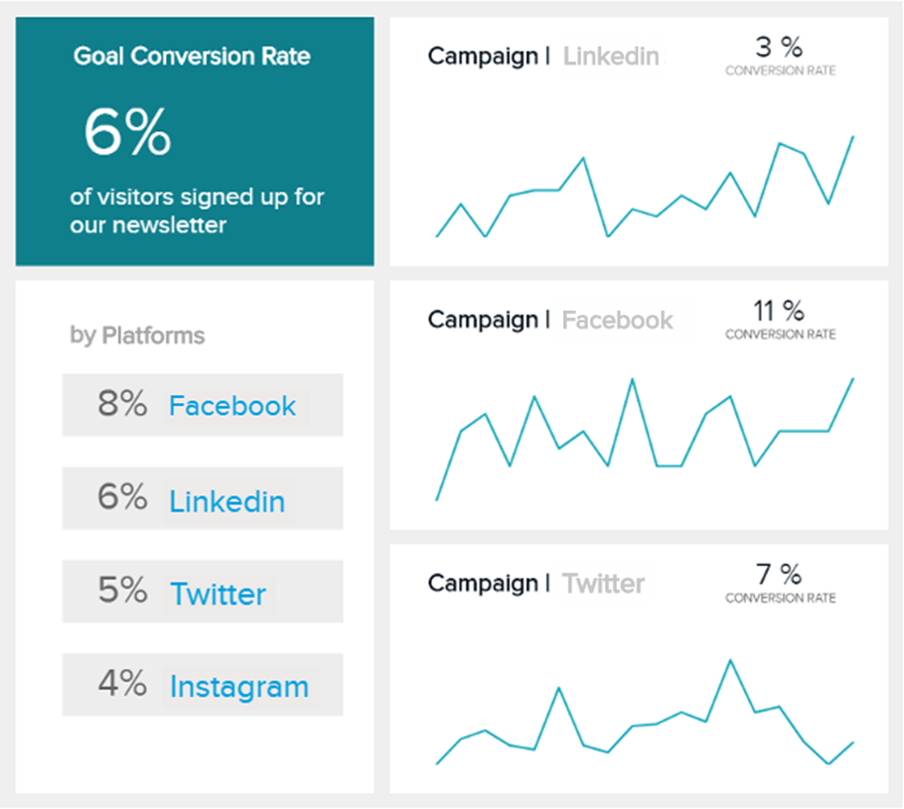
In marketing, we define ‘conversion’ as a desired action taken by your target audience. For example, this could be a purchase, a website click, a phone call, or a visit to a brick-and-mortar store. When talking about conversions on a website, companies often have multiple conversion goals they wish to track. Distinct segments of your website are intended for different audiences at different stages in their buying journey. How you set up your website to attract conversions has an effect on how well you’re hitting your conversion goals. For instance, a home page pop-up form is designed to attract top-of-the-funnel leads and get them to sign up for a newsletter, which could then be used to attract sales or demo requests.
Start by defining your goals for each marketing channel and campaign, then track the conversion rate of each. Compare this to other data, such as dwell time or page bounce rates, to learn more about what works well and what isn’t working.
5. HR: How do we measure employee effectiveness?
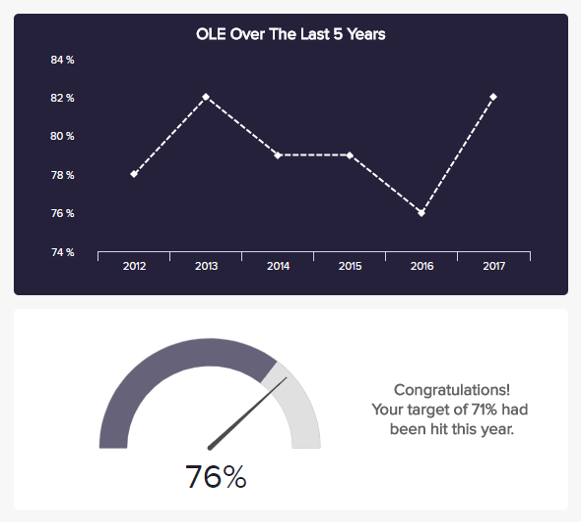
There’s a difference between “doing your job” and being effective at your job. That’s why many companies track Overall Labor Effectiveness (OLE) to ensure the company as a whole is operating at its highest level. Typically measured by dividing total sales by the number of employees, OLE takes a more nuanced approach by considering three key components: availability (actual working time), performance (product output), and quality (production of saleable products).
By looking closely into these dimensions, organizations can gain insights into the quantity and quality of work accomplished, enabling them to make informed adjustments to their work processes as needed. This is a great metric to assess hiring quality over time and to make adjustments to training, retention, and candidate sourcing.
6. Customer service: How long are our customers on hold?
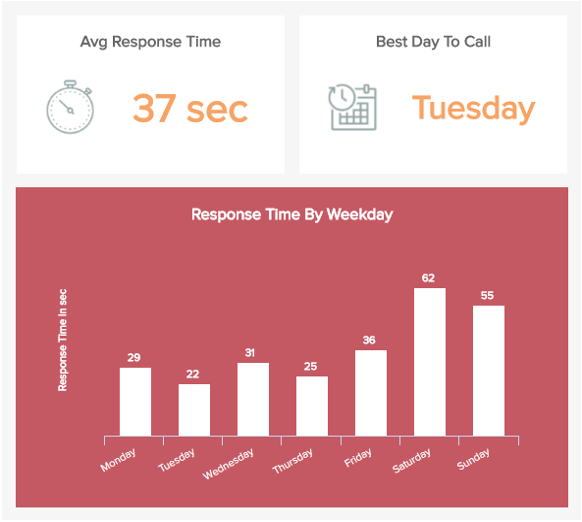
No one likes to be placed on hold, yet it’s an inevitable part of doing business. While many customers understand this and are willing to wait their turn, hold times can also result in low customer satisfaction, loss of business, and even reputational damage. The more responsive a company is, the faster an issue can be resolved and the happier your customer will likely be. That’s why measuring Average Response Time—the average time between a customer’s call and an agent’s response—is so critical.
Responding quickly to your customers’ calls shows them you respect their time and are willing and able to help them. It also gives them a good impression of your brand, even if you can’t resolve their issue immediately. Tracking average response time can help you make informed staffing decisions based on demand (e.g., a high average response time could indicate you need more agents during a certain time of day) and provide the right training resources and decision-making authority.
7. Procurement: To whom do we address our urgent orders?
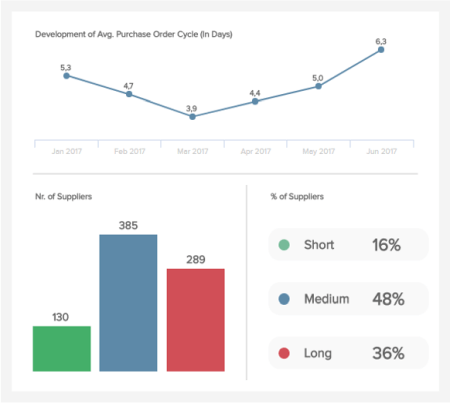
Procurement times have a direct impact on a business’s ability to serve its customers and maintain deadlines. To gain visibility into your procurement practices, it’s important to track how long it takes to receive business-critical items. The Purchase Order Cycle Time, a crucial procurement KPI, it encompasses the entire ordering process, from order creation to approval, receipt, invoice, and payment. Notably, it focuses solely on the order itself and excludes the manufacturing and delivery of the product or material.
By tracking purchase order performance over time, procurement managers can identify issues at a glance and proactively address seasonal changes. Companies can also categorize suppliers based on their purchase cycle times: short (4 days or less), medium (5 to 8 days), or long (over 8 days). Having this ability to categorize suppliers based on order time can be essential when placing urgent orders, as it allows you to prioritize business with rapid-delivery suppliers.
8. IT: How many bugs do we regularly encounter?
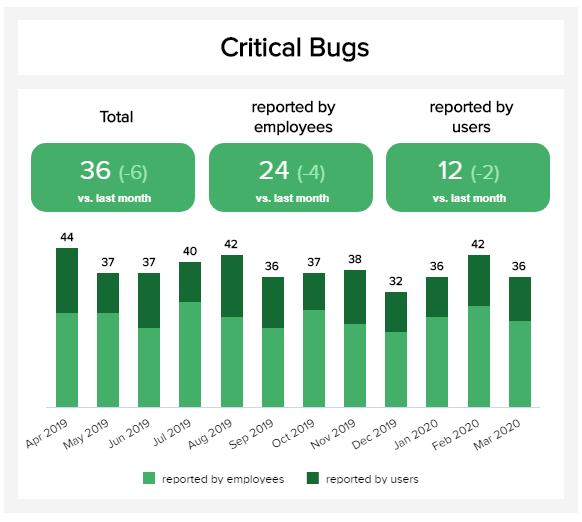
“Bugs” happen, but that doesn’t mean they don’t need to be addressed. Some bugs in your IT system may be more critical than others, ultimately affecting the end-user experience or even creating vulnerabilities. While IT teams combat bugs on a daily basis, it’s equally important to track the number of bugs that are discovered and fixed over time: Who is reporting them? When and how do they occur?
The goal is to keep the number of bugs as low as possible, especially if bugs are being reported externally. Reviewing historical trends can prompt deeper investigations while raising questions that can safeguard your reputation and prevent bugs from occurring in the future. This comprehensive approach allows for strategic interventions and improvements to ensure a robust and reliable IT infrastructure over time.
9. Logistics: How can we monitor the degree of incidents in our warehouse?
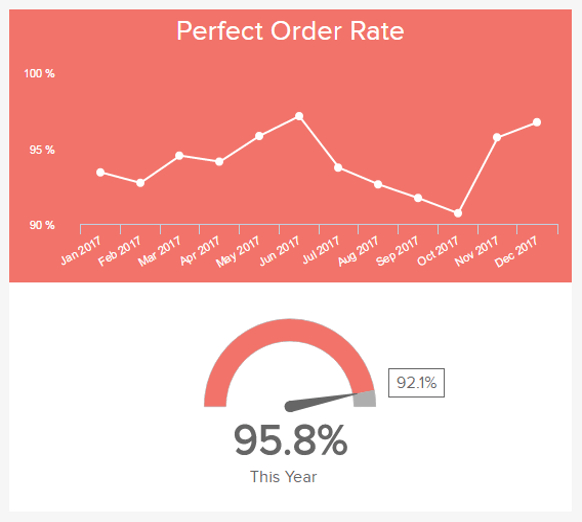
When dealing with warehouse logistics, many things can go wrong at any given time. Sometimes, these incidents will be outside of your control: a manufacturer had parts on backorder and couldn’t fulfill your orders, or a delivery driver had engine trouble and was several hours late to your loading dock. However, sometimes, these incidents are things you can influence, such as having perfect order rates due to accurate processing and shipping methods.
The Perfect Order Rate is a crucial logistics metric that assesses supply chain efficiency. It reflects the number of orders that are processed, shipped, and delivered without incident, which leads to on-time deliveries, happy customers, and damage prevention. This is one of the most common indicators of success in supply chain efficiency because it directly impacts customer satisfaction. A high Perfect Order Rate signifies a well-functioning supply chain, ultimately leading to sustainable business growth.
All of these business analytics examples show how correct KPI management can bring positive business outcomes by utilizing the right solutions and software. Now, let's take a look at some real-life examples.
See Real-Life Examples Of Data-Driven KPI Success
Here are three shining examples of real-life organizations using KPI management to increase productivity and efficiency and to become smarter in their goal-setting and strategic efforts.
1. US-based web application provider
As we've established, data is only useful if you can manage it effectively and gain the insights you need to encourage growth and development. Facing the challenge of fragmented data and poor data management processes, a growing US-based application provider could not track the performance of its core sales team.
To overcome this challenge, the company used our dashboard reporting software to improve its decision-making processes as well as manage its sales and customer service performance more efficiently.
By gaining the ability to integrate a customizable, KPI-driven data visualization tool into its existing CMS and gain access to all of its most important data in one central location, the company reaped the rewards of improved customer insights. They also saw increased operational efficiency through boosted internal communication and enhanced productivity throughout the business with the ability to access KPI performance information and insights via mobile devices. A testament to the power of using a KPI real-time dashboard to enhance internal performance.
2. The City of Belfast
To demonstrate the enormous power and potential of successful KPI performance management, this particular example applies to an entire major city.
Belfast has a population of over 330,000, and since the area's political unrest settled down, the city has undergone significant economic growth as well as commercial development. Inspired by this new chapter of prosperity, the city council wanted to improve the quality of life for its residents by rolling out a number of key initiatives throughout the city.
To do so, the council created a one-page map of its strategy, which involved encouraging culture and diversity, reducing waste and emissions, and stimulating growth through regeneration and tourism. After prioritizing its initiatives, the city council selected a set of KPIs that aligned with their individual goals and used KPI management solutions such as a data dashboard to uncover new insights and measure performance.
Through developing a thoughtful KPI management solution and using reporting tools to visualize performance in a host of critical areas, Belfast is now a greener city and was recently named one of the world’s best visitor destinations.
3. Nuclear Office
A nuclear office is responsible for regulating nuclear safety and security for the nation in which it’s based, and it's safe to say that it’s an important job.
An organization like this usually manages 400 employees or more. Recently, one of the world’s most pivotal nuclear regulation offices identified a lack of interdepartmental cohesiveness, something that was affecting its overall output and productivity. To overcome this roadblock, the organization adopted KPI management solutions to streamline its internal processes and improve leadership as well as interdepartmental relationships.
After interviewing individuals within the organization and collaboratively mapping out a strategy, the organization carefully selected its core KPIs to help answer its most important questions and monitor its performance over time.
By leveraging performance indicators to its advantage, the nuclear office has not only helped to significantly boost engagement throughout the organization, but it has also improved its overall business intelligence and productivity levels. A testament to the power of employing KPI best practices in the digital age.
Explore our 14-days free trial & benefit from great KPI analysis today!
Conclusion…
At datapine, we strive to leverage technological innovation to provide the answers managers need to narrow their goals and propel their businesses to new, prosperous heights – and KPI analysis is just one of the many duties integrated into our self-service BI tools.
To learn more about how you can help develop your business with the right KPIs, sign up for a 14-day trial today! It's completely free!